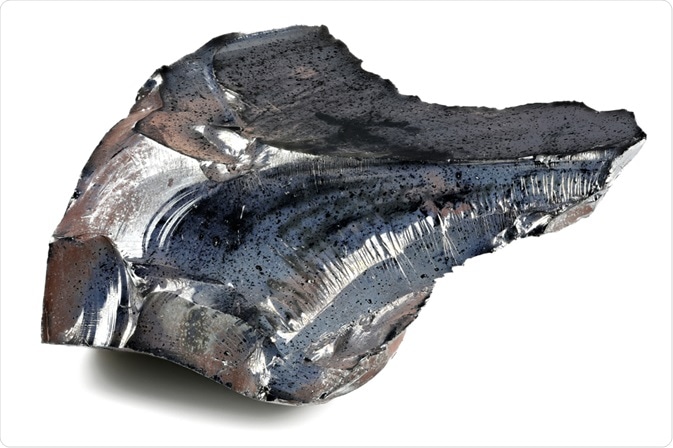Since the discovery of selenium's photoconductive properties, this element has been used for many diverse applications.

Image Credit: Bjoern Wylezich / Shutterstock.com
Selenium and photoconductivity
Photoconductivity was discovered by William Adams and Richard Day in 1876, who found that selenium produced an electric current when the light was allowed to fall on it.
The importance of this phenomenon was recognized by electrical scientists, who proved that light could be converted into electricity without the need for heat or machinery. This eventually led to the development of photovoltaic or solar cells.
Selenium compounds and their uses
In the form of sodium selenate, is used in the glass industry, where small amounts act to decolorize glass. For example, adding a little selenium has been shown to remove the green tint imparted by the presence of iron impurities in soda-lime-silica glass.
Larger amounts of ammonium selenite are used to make ruby red glass, such as those that are used in traffic lights, as well as in the manufacturing of art glass and black glass. The presence of selenium in plate glass is important to architects, as it reduces the amount of solar radiation that is transmitted through the glass.
Cadmium selenide is used for its photoconductive and photoelectric properties, particularly in the electronics industry. Some of the different uses of cadmium selenide within electronics include security equipment such as “electric eyes,” photoreceptors for photocopy machines, as well as rectifiers and light exposure meters for the photographic industry. Selenium compounds are now largely replaced by organic photoreceptors, which are safer, more cost-effective, higher performing and, operate at lower speeds.
Elemental selenium is used in the manufacturing of stainless steel and several other alloys, such as with bismuth as a safer substitute for lead in plumbing applications.
In photography, selenium is used to coat metal cylinders in order to produce a transferable photographic image by the process of xerography.
Selenium is also used to produce heat-stable pigments in the red spectrum, such as those used to manufacture plastics, paints, enamels, inks, and rubber. These pigments resist dampness and withstand the effects of both chemical exposure and solar radiation. However, the toxicity of cadmium and its higher cost has restricted its widespread use.
Selenium acts as a catalyst in the production of medicinal drugs such as cortisone. Comparatively, selenium sulfide is an effective ingredient in antidandruff shampoos. In certain veterinary formulations, selenium disulfide can also be found as an active ingredient.
Selenium diethyldithiocarbamate is used in certain fungicidal preparations and in the vulcanization process of rubber.
Selenium is also used as feed enrichment for livestock and poultry, as well as a component in the preparation of pesticides.
Selenium-containing dietary supplements are usually tablets containing 10-25 micrograms (µg) of available selenium.
Sodium selenite is an inorganic compound that is used to enrich the soil in selenium-deficient areas.
Selenium dioxide is a catalyst used in several processes such as oxidation, hydrogenation and dehydrogenation of organic compounds.
Whereas selenium hexafluoride is an electrical insulator gas, selenium oxychloride is an industrial solvent used in the processing of sulfur, selenium, tellurium, rubber, resins, bakelite, gums, glues, and asphalt.
Aluminum selenite is used in the production of hydrogen selenide for use as semiconductors.
Cupric selenate is used to impart color to copper and copper alloys and tungsten diselenide is used in lubricants.
References
Further Reading